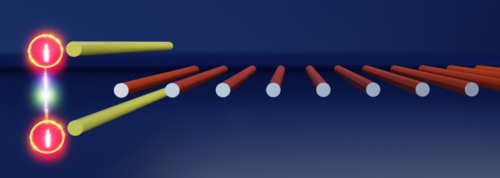Using a precise arrangement of coupled photonic waveguides and leveraging anti–parity-time symmetry (APT), the researchers succeeded in selectively isolating entangled photon states while effectively eliminating unentangled components. The structure acts as an “optical entanglement filter” that operates without the need for absorbing or amplifying materials.
“Our results offer an approach to using non-Hermitian symmetries to address central challenges in quantum technologies.”
(Selim et al., Science, 2025)
The APT-based filter system achieves near-perfect precision for both single- and two-photon excitation and exhibits remarkable robustness against decoherence—one of the main challenges in quantum information processing.
“Any arbitrary N-photon excitation […] irreversibly evolves toward a single point, corresponding to a specific entangled mode.”
(Selim et al.)
The concept was not only theoretically developed but also experimentally realized using femtosecond laser writing in glass. This miniaturizable chip-based technology paves the way for advanced applications in quantum communication, sensing, and computing.
This research was supported by the German Research Foundation and the Alfried Krupp von Bohlen und Halbach Foundation.
Zur Publikation: M. A. Selim, M. Ehrhardt et al., “Selective filtering of photonic quantum entanglement via anti-parity-time symmetry,” Science, https://doi.org/10.1126/science.adu3777 (2025).

